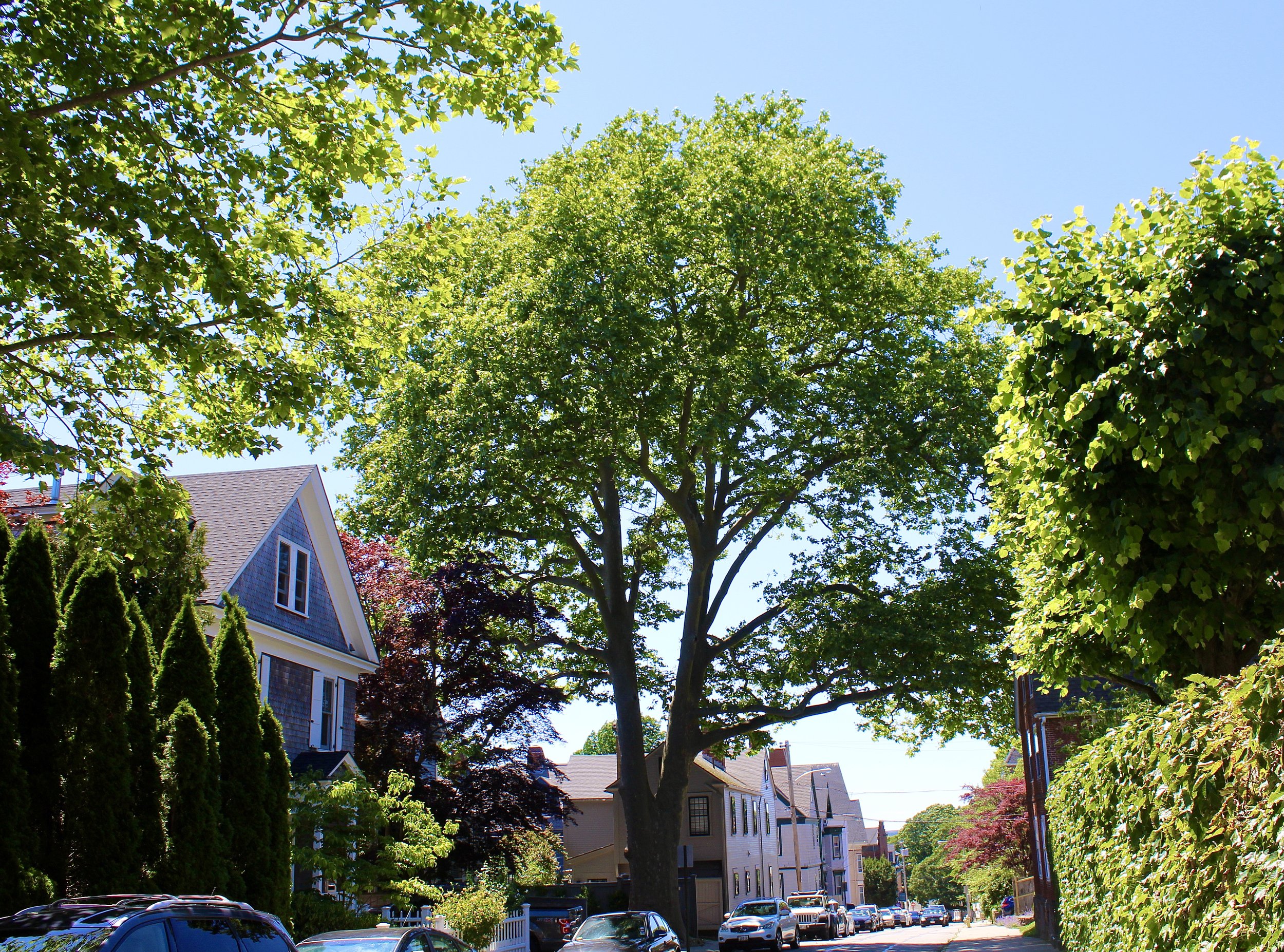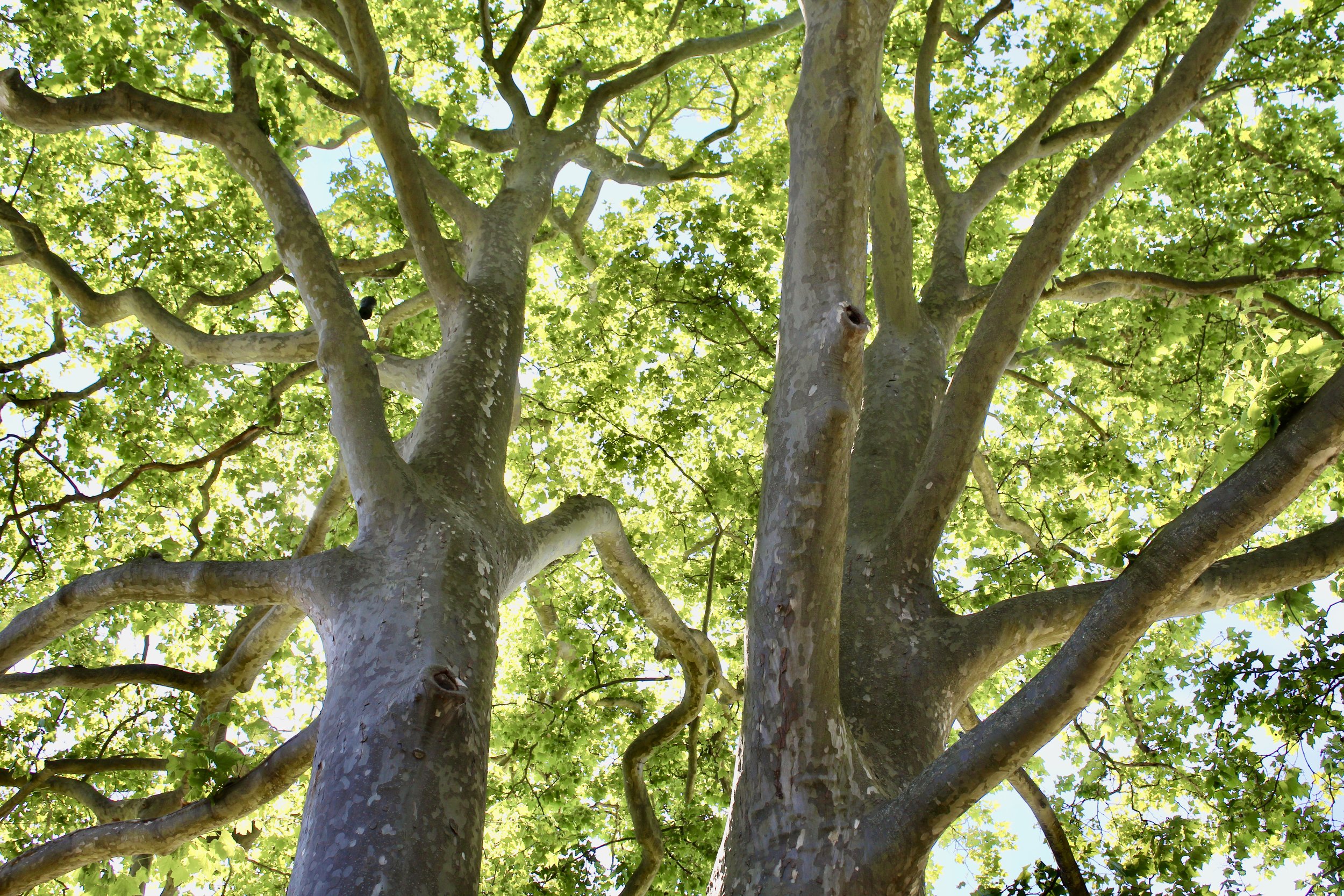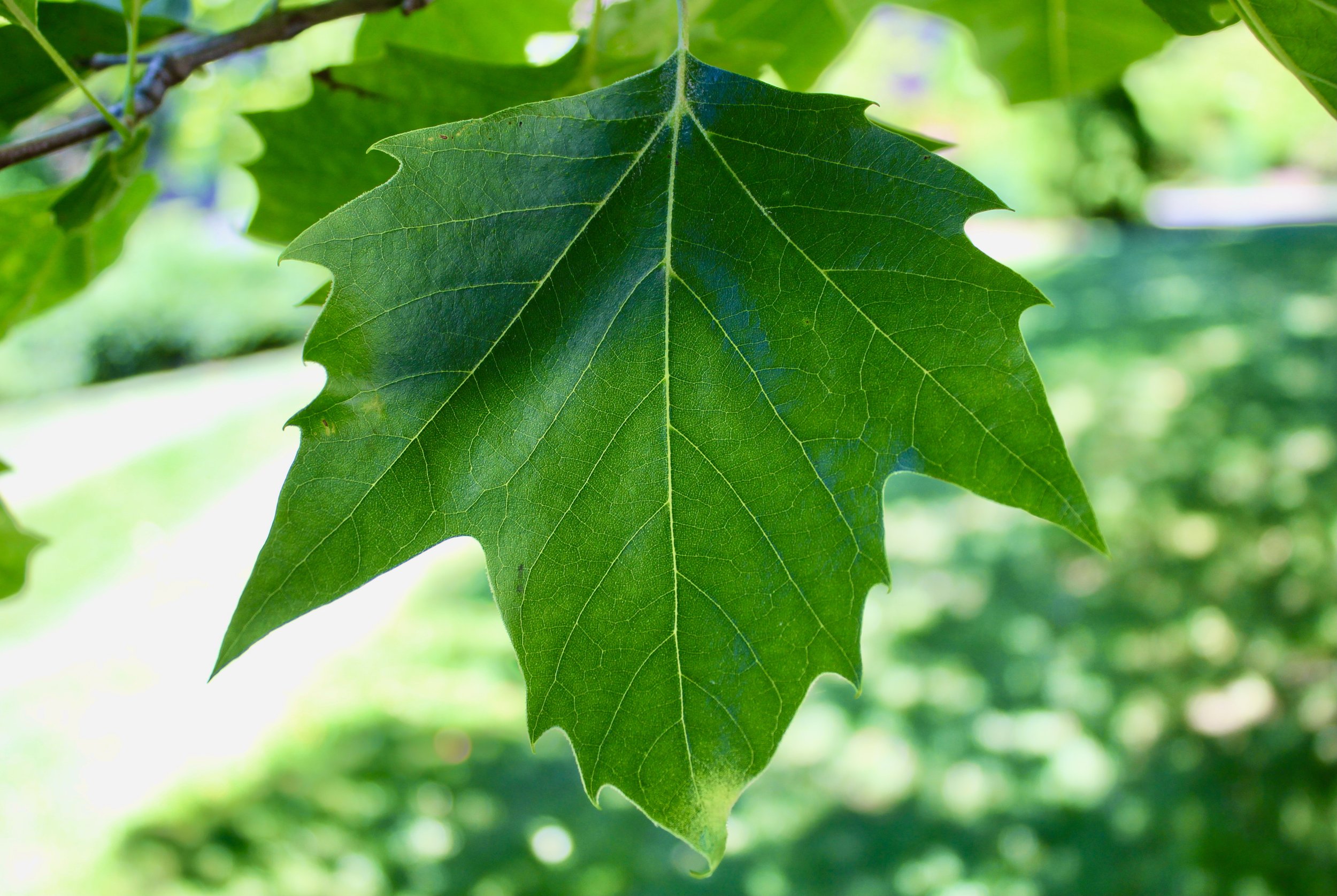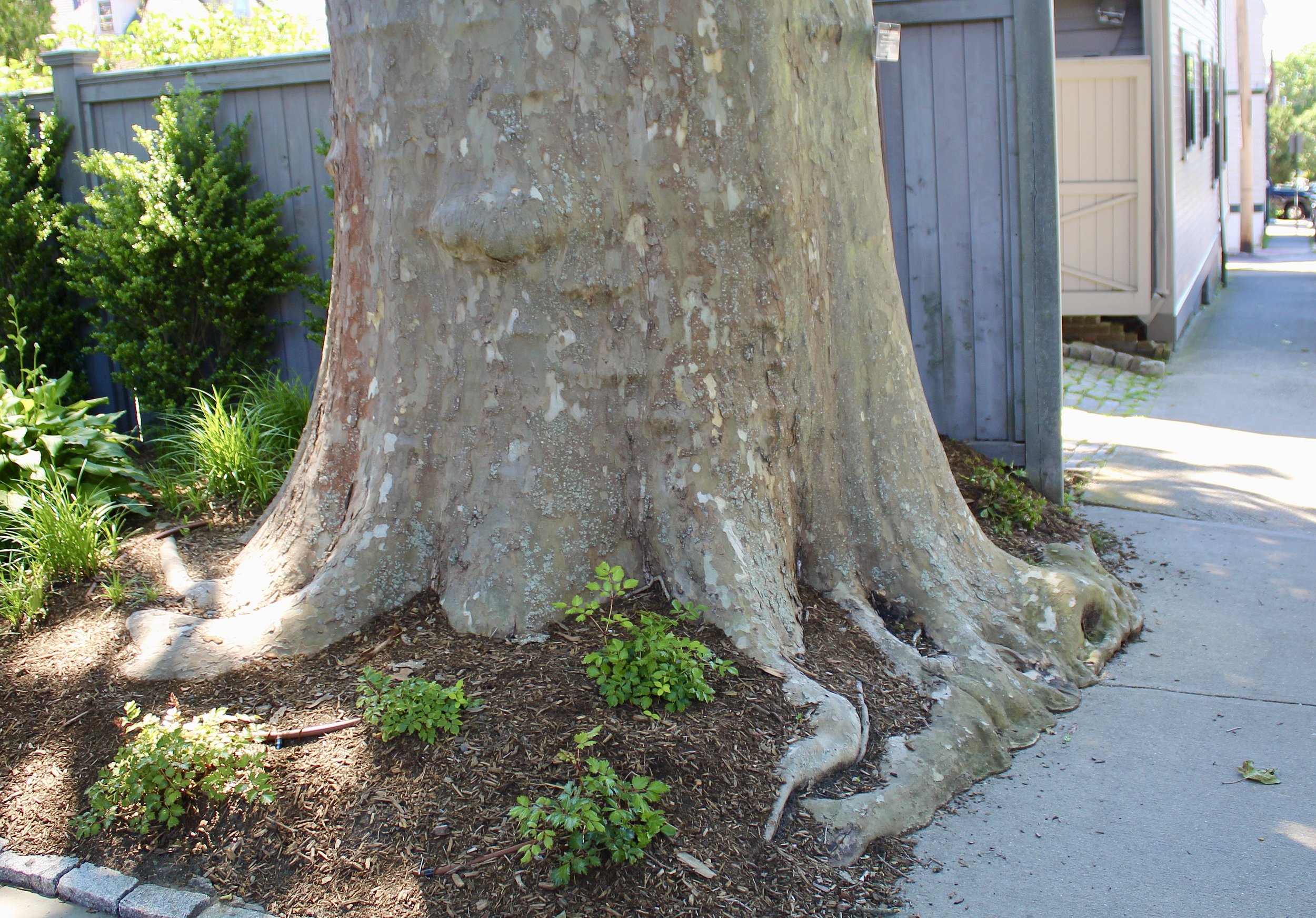London Planetree (Platanus x acerfolia)





This week’s honorary tree is the gigantic London planetree (Platanus x acerifolia) humbling all who pass underneath on Mill Street. When it comes to this storied plant, the conversation could go on for hours. Incredible size and architecture truly inspire, and it’s necessary to stop over to see it in person, photos just don’t do it justice! If I had to estimate a size, 70-80 feet is probably in the ballpark. The spread is probably close to that, and the DBH (Diameter at breast height) of the trunk is roughly 8 feet. Two central leaders push into the sky, with muscular, snaking branches traveling outward and exploring the open air. The crown shades multiple houses and reaches fully across the street, with the end of a branch greeting a neighbor in the second story window. The root flare has oozed over the sidewalk like lava flow down a hillside, a great look at the way in which trees expand outward. Simply a majestic specimen, a joy to behold.
London planetree is a hybrid, the result of a cross between the native sycamore (Platanus occidentalis), and the Oriental planetree (Platanus orientalis). The hybrid first originated in London in the 17th century, and from there spread throughout Europe and to the United States. One of the most common street trees in cities worldwide, the tree is a common, yet always pleasing sight. As we have observed, the tree can mature to great sizes, with some specimens reaching over 100 feet. Individual trees take on unique forms and personality, the brain of a plant at work. The large leaves are maple-like, with 3-5 deeply cut lobes. The bark is variable from tree to tree, but always beautiful, with white, olive, brown, green, gray, and other colors blotched together on a smooth surface. Inconspicuous flowers bloom around the time the tree is leafing out, and develop into hanging, spherical fruits. P. x acerifolia fruits often hang 2 to a stalk, while P. occidentalis fruits hang alone, a good way to separate the two species. Generally, a durable tree that can be at home wherever there is adequate space. Canker stain and anthracnose, which also seriously affect the sycamore, are problems that may arise.
